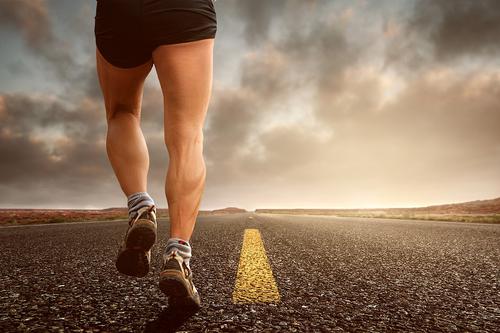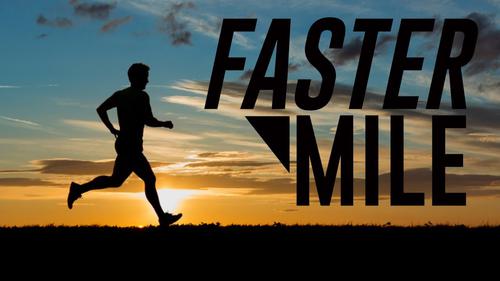As a beginner, you always want to run faster. But first, you must put your body in a trial run test to see if it's prone to injuries. Once you find your body up to the mark, confusion may arise whether you need to increase your distance or speed. You must be wondering your average time running one mile.
It's better to set a goal pace in running one mile that will help you build endurance and improve your overall body strength, including heart and lungs. Keep track of your time or distance for each mile you run. Start increasing it gradually.
Average Time Running Each Mile Differ Individually
There are many factors affecting the average time running one mile for each individual. These factors include the following:
1. Gender
Gender is an important factor that affects your running speed. Provided that fitness levels are equal, women usually have a longer average time running one mile. To promote healthy and fair competition among individuals, it's usually preferred to separate the race categories by gender and age.
2. Age factor
- Below 17 years old
Runners in this age group belong to the high school and cross country runner groups. They tend to be completely fit and healthy. In most parts of the States, high school boys who can run a sub-5:00 miles can be very competitive on high school track and cross country teams. The same rings true for high school girls who can run a sub-6:00 mile.
- Ages 17-21
Runners usually pace up their speed during early adulthood and run fastest miles during the ages 17-30. The most elite runners usually slow down as they age. A runner who is aged 17-21 with good health can run one mile within 6:39 if he is ranked among the top 1% of his age group. Runners who wish to include themselves in 50% batch for this specific age group should aim for one mile in 8:56.
- Ages 37-41
In this age group, the fitness levels start to diminish. However, people who tend to keep themselves healthier and fitter by performing exercises daily can run faster and cover the distance in a short time. These individuals can complete one mile in 6:48 and come in the top 1% of their age group. However, runners who finish it in 9:45 are included in 50% batch of their age group.
- Ages 42-46
These individuals still aim to keep themselves healthy and want to take part in sports activities. They can complete one mile in 7:03 for inclusion in the top 1%. People need to complete one mile in 9:57 in order to get into 50% for this age group.
- You can use a calculator
There are calculators available on the USATF website which can be used to evaluate the equivalent times by simply manipulating the given variables. You need to keep the age, gender, and distance in the same numerical while entering 100 within the percentage box. For example, there's a 57-year-old woman Jenny who runs 5K within 24: 51-time frame. The age grade for Jenny comes around 73-84 percent.
According to this, 24:51 was the best possible time for her age group. When 100% is entered in the percentage box, Jenny observes that 18:21 is the best possible time for a 57-year-old woman to run one mile. Now if you enter 74% and alter the age to 30 years, the equivalent time for such women will be 17:28.

3. Activity Level
- Army standard
The US army has set standards for runners according to the age factor which helps them to reach their target of running one mile within a specific time frame. The Army recruits people for passing the graduate program for basic training by using a 3-event test, evaluating the physical performance by an endurance assessment. You need to run 2 miles within the given time. Men aged 17-21 should complete 2 miles in 15:54, while those aged 22-26 should complete it in 16:36. For women aged 17-21 should complete a run of 2 miles in 18:54, and those aged 22-26 should finish it at 19:36.
- Fitness level
Fitness level is an important factor to determine the running speed of an individual over long distances. An athlete with perfect fitness level might complete one mile within 5 minutes. The time published in world records is around 3 minutes and 43 seconds. If a beginner is planning to increase the pace by run-walk system, then he needs around 12-15 minutes for building endurance.
How to Improve Your Average Time Running One Mile
Follow these simple tips to improve your average time running one mile:
- Do warm-up exercises
Try to perform interval training by alternating the periods between high and low intensity to build up your speed and endurance. Make sure to exercise on the treadmill as it allows you to set your pace along with the leg turnover. Perform stretches to increase the flexibility by targeting your hip flexors. Plan on adding workouts related to jump rope in order to speed up your feet.
- Mind your running posture
Keep your upper body in a relaxed and tall posture - Strike the ground with a mid-foot landing! Swing your arms forward and in a backward direction at lower than 90 degrees. Try dorsiflexion while you run: keep your toes arching in direction of your shins. The less the feet hit the ground, the better it is for your stride. Try to keep your arms hard in a backward direction to give you a strong swing and boost up your speed.
- Adjust your breath patterns
Learn how to breathe while practicing to run faster. Make use of mouth and nose at the same time for inhaling and exhaling, so that you can get maximum oxygen for your muscles. You can also try belly breathing by filling in the stomach, and not your chest, with each, inhales.
- Choose proper shoes
No need to start running barefoot, but you do need to keep yourself light enough to allow your feet to move naturally. This improves your stride. Try lighter shoes to increase your energy and start running faster.
- Speed up gradually
Slow and steady wins the race. Still, being fast, as well as steady, can gradually build up your speed. Alternate between sprints and jogs to speed up gradually and increase your endurance.

The Wrap-Up
For beginners, it's advised to follow the simple tips and perform warm-up exercises to increase your average time running one mile. Keep track of your time and distance to increase your chances of becoming a great athlete. Follow the basic principles and increase your fitness level by performing yoga, mountain climbing, and paying attention to the position of your toes.
